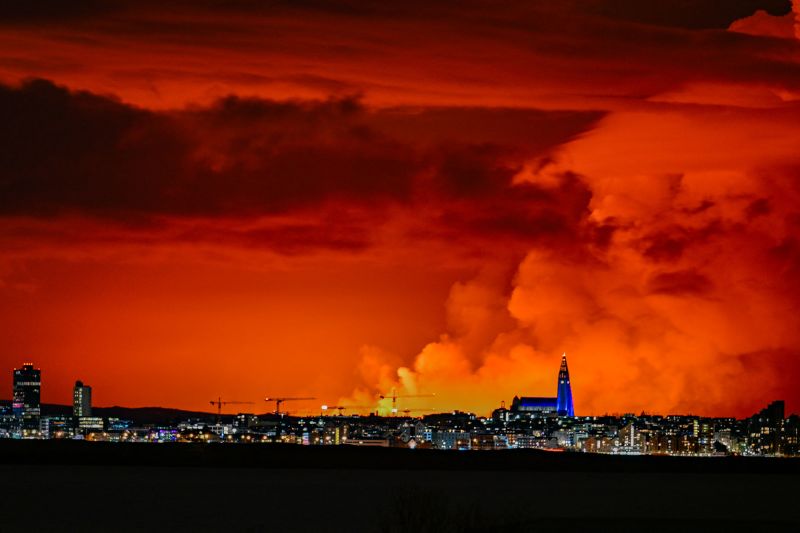Iceland’s rich geology came alive as its most recent volcanic eruption took place, leading to the immediate evacuation of one of its most popular tourist spots, the Blue Lagoon. The event, as per Iceland’s public broadcaster, unearthed not only blankets of molten lava but also insightful lessons about Iceland’s geophysical characteristics and the anthropological impacts of such natural disasters.
Located in the Reykjanes Peninsula, the Fagradalsfjall volcano had been dormant for 6,000 years, making this eruption a noteworthy event in Iceland’s geologic history. The eruption manifested in a spectacular display of molten magma, illuminating the night sky with fiery hues. The exact moment of the volcano’s awakening isn’t known, but preliminary reports suggest that it happened around late evening, warranting extensive coverage by the Icelandic Broadcasting Service.
The Blue Lagoon, nestled roughly 20 kilometers away from the active volcano, is world-renowned for its geothermal properties. Warm-lit mineral-rich waters offer a restorative experience for many visitors globally. During the eruption, however, officials decided to shut down this famous retreat temporarily and evacuated the premises, keeping public safety as prime importance.
According to experts, the eruption was not a complete surprise. Seismologists had been tracking a significant increase in seismic activity around the volcano for weeks before the event. The Fagradalsfjall volcano sits atop the tectonic divide between the North American and Eurasian plates – a prime site for volcanic activity. Yet, the sheer suddenness of the eruption forced authorities to act swiftly to prevent possible causalities.
In the crunch moment, the Icelandic authorities initiated an emergency evacuation process for the Blue Lagoon, effectively averting any potential hazards. While there were no immediate threats given the distance from the volcano, the preventive evacuation elucidated the Icelandic government’s dedication to upholding public safety even amidst such unforeseen situations.
The public broadcaster played a significant role in informing the public, spreading news of the eruption, and the ensuing evacuation. They promptly covered the event, providing regular updates and ensuring that the population remained knowledgeable and prepared for any possible changes in circumstance.
The volcanic ashes, although a sight to behold, can be detrimental to the environment and infrastructure. Volcanic ash, comprising tiny particles of glass and pulverized rock, when inhaled, may cause severe respiratory issues. Furthermore, they damage buildings, agriculture, and can interrupt power supply systems.
Repercussions of the eruption went beyond just potential health hazards and threat to infrastructure. The tourism industry, particularly locations like the Blue Lagoon, had to deal with immediate operational challenges. This incident underscores how volatile geothermal activity can significantly impact nations heavily relying on geotourism.
Yet, despite the early concerns, the eruption of Fagradalsfjall volcano may not entirely be a harbinger of destruction. In stark contrast to the evacuations and possible dangers, the eruption provided researchers with an excellent opportunity to study the volcano’s character up close, providing valuable geological insights.
Iceland’s volcanic eruption and the quick evacuation of the Blue Lagoon underlined the country’s affirmative response to geophysical crises. The event showcased the balanced cohabitation of humans and nature in this geologically vibrant nation. And although the eruption posed challenges, it also reminds us of the myriad ways in which geology shapes the planet’s dynamic topography.




